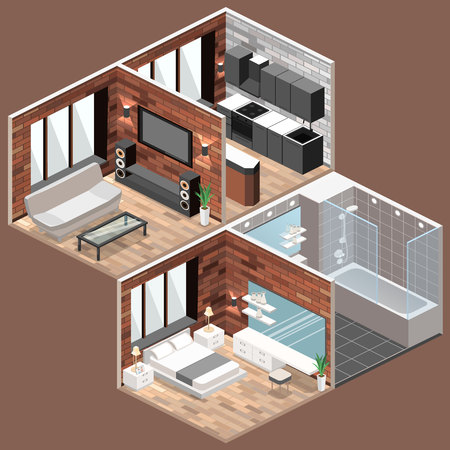1. Underestimating the Budget
Renovating a bathroom in the U.S. is exciting, but it’s easy to fall into the trap of underestimating how much you’ll actually spend. One of the biggest pitfalls is not allocating enough funds for both expected renovations and unexpected surprises that often pop up, such as plumbing issues or hidden water damage. If you only budget for what you can see—like new tiles, vanity, or fixtures—you might be caught off guard when the contractor finds mold behind your old shower wall or outdated pipes that need replacing.
Common Hidden Costs to Watch Out For
| Potential Extra Cost | Description | Typical Price Range (USD) |
|---|---|---|
| Plumbing Issues | Old or damaged pipes needing replacement or repair | $500 – $2,000+ |
| Water Damage Repair | Mold, rot, or leaks discovered after demo begins | $800 – $3,500+ |
| Electrical Upgrades | Bringing wiring up to code or adding GFCI outlets | $300 – $1,500+ |
| Patching Walls/Floors | Unexpected repairs after removing old materials | $200 – $1,000+ |
| Permit Fees | Required by most U.S. cities for major renovations | $100 – $900+ |
The Smart Way to Budget for Your Bathroom Remodel
A good rule of thumb is to set aside an extra 15-20% of your total renovation budget just for these unforeseen expenses. For example, if your planned remodel is $10,000, keep at least $1,500-$2,000 reserved for emergencies. This way, you won’t be scrambling if something unexpected comes up mid-project.
Pro Tip: Get Multiple Quotes and Be Specific
Always get quotes from at least three local contractors and make sure they break down costs line by line. Don’t just look at the bottom number—ask what’s included and what’s not. It’s a lot easier to manage your budget when you know exactly where every dollar is going.
2. Skipping Permits and Building Codes
Why You Cant Ignore Permits and Codes
Renovating your bathroom might feel like a personal project, but in the U.S., it’s not just about picking tiles or fixtures. Every city, county, and state has its own set of building codes and permit requirements. Neglecting to secure the proper permits or ignoring local building codes can lead to fines, project delays, and even problems when selling your home down the line. If you get caught skipping this step, you could be forced to tear out your hard work or pay hefty penalties. Even worse, unpermitted work often won’t pass inspection when you’re ready to sell—potential buyers and their lenders want everything up to code.
The Real-World Risks of Skipping Permits
| Risk | How It Impacts You |
|---|---|
| Fines from Local Authorities | You could get hit with unexpected costs that eat into your renovation budget. |
| Project Delays | Work might have to stop until you get the paperwork sorted—slowing everything down. |
| Problems When Selling | Buyers may back out or demand price cuts if they find unpermitted work during an inspection. |
| Safety Hazards | No inspections mean issues like faulty wiring or plumbing can go unnoticed, risking future damage. |
Common Bathroom Projects That Need Permits
- Moving plumbing lines or drains
- Electrical upgrades (like adding outlets or lighting)
- Structural changes (removing walls or enlarging windows)
Pro Tip: Call Your Local Building Department First
Before swinging a hammer, always check with your local building department. They’ll tell you exactly what permits you need for your bathroom remodel. This simple step saves you time, money, and headaches later on—and keeps your investment protected for the long haul.

3. Choosing Style Over Functionality
If you’re renovating a bathroom in the U.S., it’s easy to get caught up in Pinterest boards and Instagram-worthy designs. But here’s the truth—focusing only on aesthetics can leave you with a space that looks great but doesn’t actually work for your everyday needs. Let’s break down what really matters so you don’t end up with buyer’s remorse.
Why Functionality Comes First
Your bathroom isn’t just for show; it has to handle daily routines, store essentials, and stay fresh over time. When you ignore practical details, you risk ending up with moldy walls, cluttered countertops, or high water bills.
Key Functional Features You Can’t Ignore
| Feature | Why It Matters | What to Look For |
|---|---|---|
| Ventilation | Prevents mold, protects finishes, keeps air fresh | High-quality exhaust fan, operable window |
| Storage | Keeps bathroom organized and clutter-free | Vanity cabinets, recessed shelves, medicine cabinets |
| Water Efficiency | Lowers utility bills and conserves resources | Low-flow toilets and faucets, EPA WaterSense label |
| Lighting | Makes grooming easier and safer | Layered lighting (task + ambient), dimmer switches |
| Durability of Materials | Ensures finishes last and look good over time | Water-resistant flooring, mildew-proof paint, solid-surface counters |
How to Balance Style and Functionality
The best investment is a bathroom that works as well as it wows. Choose stylish materials that are also tough against moisture. Go for layouts that maximize storage without crowding the room. And always pick fixtures that offer both design appeal and water-saving features.
Pro Tip:
If you’re planning to sell your home someday, U.S. buyers love bathrooms that not only look modern but also feel spacious, easy to clean, and energy efficient. Prioritizing function now means better resale value later.
4. Going DIY Without the Skills
Thinking about saving money by doing your own bathroom renovation? While it’s tempting to tackle every part of the remodel yourself, going DIY without the right skills can be a costly mistake—especially with complex work like plumbing and electrical upgrades. In the U.S., these jobs often require specific permits and must meet building codes for safety reasons. Attempting them without proper expertise could put your home (and your investment) at risk.
Why Hiring Licensed Professionals Matters
Licensed pros know local codes, pull necessary permits, and ensure all work is up to standard. If you try to handle major tasks on your own, you might end up with:
| DIY Risk | Potential Consequence |
|---|---|
| Incorrect plumbing installation | Leaks, water damage, or mold issues |
| Poor electrical work | Fire hazards or failed inspections |
| Improper waterproofing | Tile cracks or floor rot over time |
| No permits or inspections | Problems when selling your home later |
When to Call in the Pros
If your project involves anything more complicated than painting or installing new hardware, it’s usually worth hiring licensed professionals. Here’s a quick guide:
| Project Type | DIY Friendly? | Hire a Pro? |
|---|---|---|
| Painting walls/cabinets | Yes | No need |
| Laying tile/shower install | If experienced | If unsure, yes |
| Plumbing relocation/upgrades | No | Yes—licensed plumber needed |
| Electrical wiring/lighting install | No | Yes—licensed electrician needed |
| Ventilation system changes | No | Yes—HVAC pro needed |
The Investment Payoff: Why It’s Worth It
Certain parts of a bathroom renovation are perfect for a hands-on approach, but knowing when to bring in experts can actually boost your home’s value and save you from expensive repairs down the road. When in doubt, invest in quality workmanship—it pays off both for your peace of mind and your property’s resale value.
5. Overlooking Quality Materials
When it comes to bathroom renovations in the U.S., cutting corners with cheap materials is one of the most common—and costly—mistakes homeowners make. While it might seem like you’re saving a bundle upfront, low-quality products can create bigger headaches down the road. Think about things like mold growth, warping from humidity, or tiles and fixtures wearing out way faster than expected. Bathrooms are high-moisture zones and demand materials that can handle daily exposure to water, heat, and cleaning chemicals.
Why Quality Materials Matter
If you opt for proven, durable products specifically designed for bathrooms, you’ll save money and stress over time. Here’s a quick look at how choosing the right materials stacks up:
| Material Type | Low-Quality Option | High-Quality Option | Long-Term Impact |
|---|---|---|---|
| Flooring | Laminated wood | Ceramic or porcelain tile | Laminated wood can warp or bubble; tile resists moisture and lasts longer |
| Vanity Countertops | Particleboard laminate | Quartz or natural stone | Laminate may swell; stone is resistant to water damage and stains |
| Shower Walls | Acrylic panels | Ceramic tile with proper waterproofing | Acrylic can discolor and crack; properly installed tile looks better and lasts decades |
| Fixtures (faucets, showerheads) | Plastic/low-grade metal | Solid brass/stainless steel | Cheap fixtures leak and corrode; quality ones stay strong and shiny longer |
Invest Where It Counts
You don’t have to go overboard on every single item, but focus your budget on areas that see the most use and moisture. For instance, investing in a high-quality exhaust fan helps control humidity and prevents mold. Durable grout, water-resistant paint, and trusted brands for fixtures will pay off in the form of fewer repairs and replacements.
Pro Tip:
Always check product reviews from other U.S. homeowners before buying, and look for warranties. If you’re unsure about what’s best for your climate or usage patterns, ask your contractor or a local hardware store expert—they know what holds up best in American homes.
6. Neglecting Lighting and Ventilation
One of the most overlooked mistakes in bathroom renovations across the U.S. is not giving enough attention to lighting and ventilation. Improper lighting can make your bathroom feel small, uninviting, and even unsafe. Poor ventilation, on the other hand, sets you up for long-term headaches like mold growth, peeling paint, and musty odors.
Why Lighting Matters
Good lighting isn’t just about aesthetics—it’s a practical upgrade that increases both comfort and value. American bathrooms often double as spaces for grooming, makeup, and relaxation, so bright yet soft lighting is crucial. Think about layering your lighting with overhead fixtures, vanity lights, and even accent lighting for shelves or niches.
Lighting Options at a Glance
| Type of Lighting | Best Use | Investment Impact |
|---|---|---|
| Overhead Light (Ceiling) | General illumination | Essential for resale value |
| Vanity Lights | Task lighting for mirrors/sinks | Improves functionality & appeal |
| Accent Lights | Shelves/niches/under cabinets | Adds luxury touch; higher ROI in upscale markets |
| Natural Light (Windows/Skylights) | Daytime brightness, energy saving | Makes space feel bigger; buyer favorite |
The Importance of Ventilation
A bathroom without proper ventilation is a ticking time bomb for mold and mildew—two things that kill your home’s value fast. In many parts of the U.S., building codes require an exhaust fan if there’s no operable window. Even if it’s not required, installing a quality exhaust fan is a smart move. It keeps humidity in check, protects finishes, and helps avoid costly repairs down the road.
Ventilation Choices Simplified
| Option | Pros | Cons | Best For |
|---|---|---|---|
| Exhaust Fan Only | Reliable moisture control; easy install | No natural light added; needs wiring | Bathrooms without windows |
| Window + Exhaust Fan Combo | Maximum air flow; natural light bonus | May need extra wall work; more expensive up front | Main bathrooms; master suites; high-humidity areas (like Florida or coastal cities) |
| Ductless Fan w/ Filter | No ductwork needed; easier retrofit in older homes/apartments | Less effective than vented fans; filter changes required regularly | Powder rooms or half-baths where exterior venting isn’t possible |
Pro Tip:
If you’re aiming for maximum return on investment, don’t skimp on lighting and ventilation upgrades. These features are top priorities for American homebuyers—they notice when a bathroom feels fresh, bright, and comfortable.


